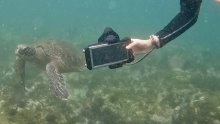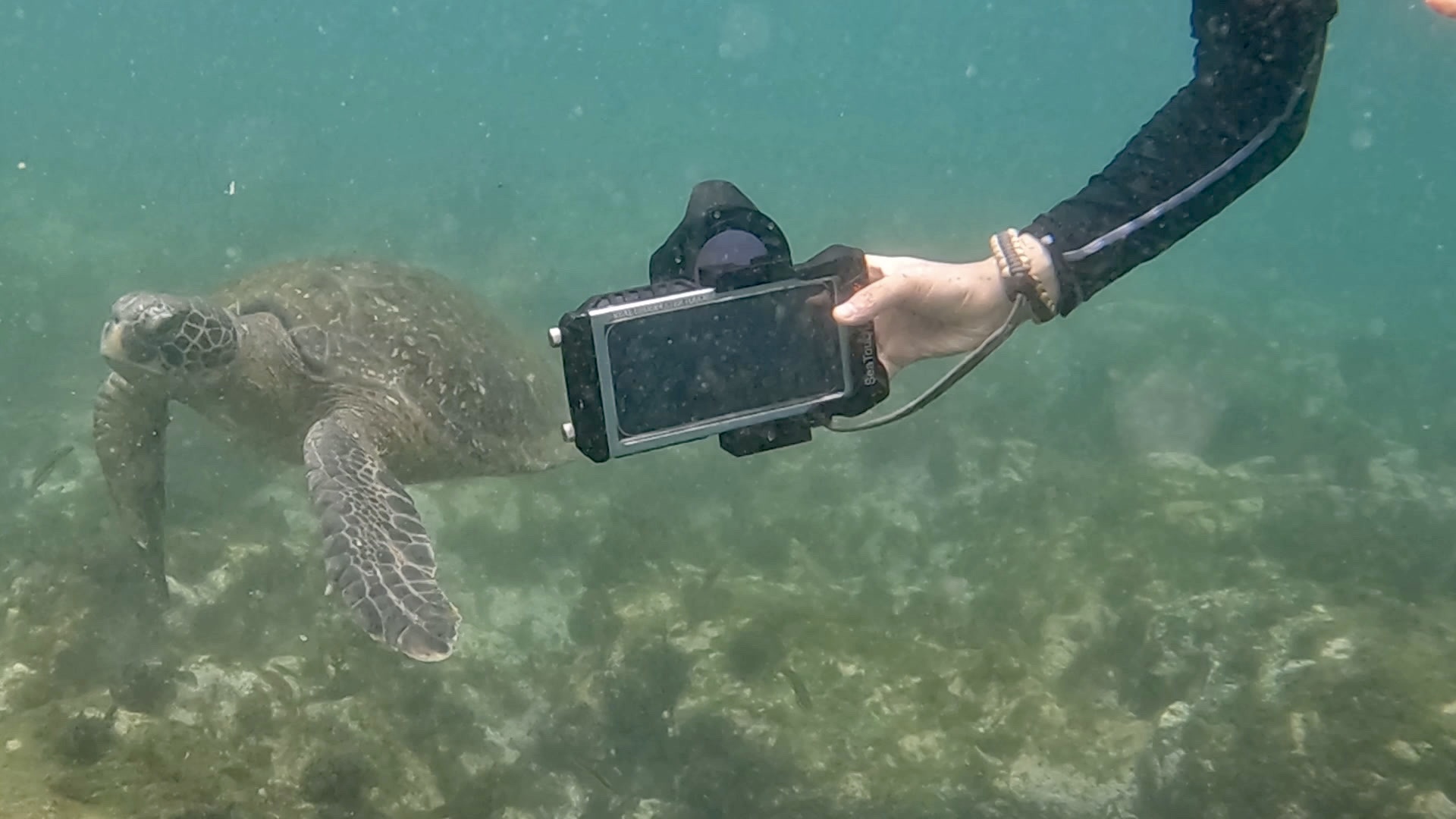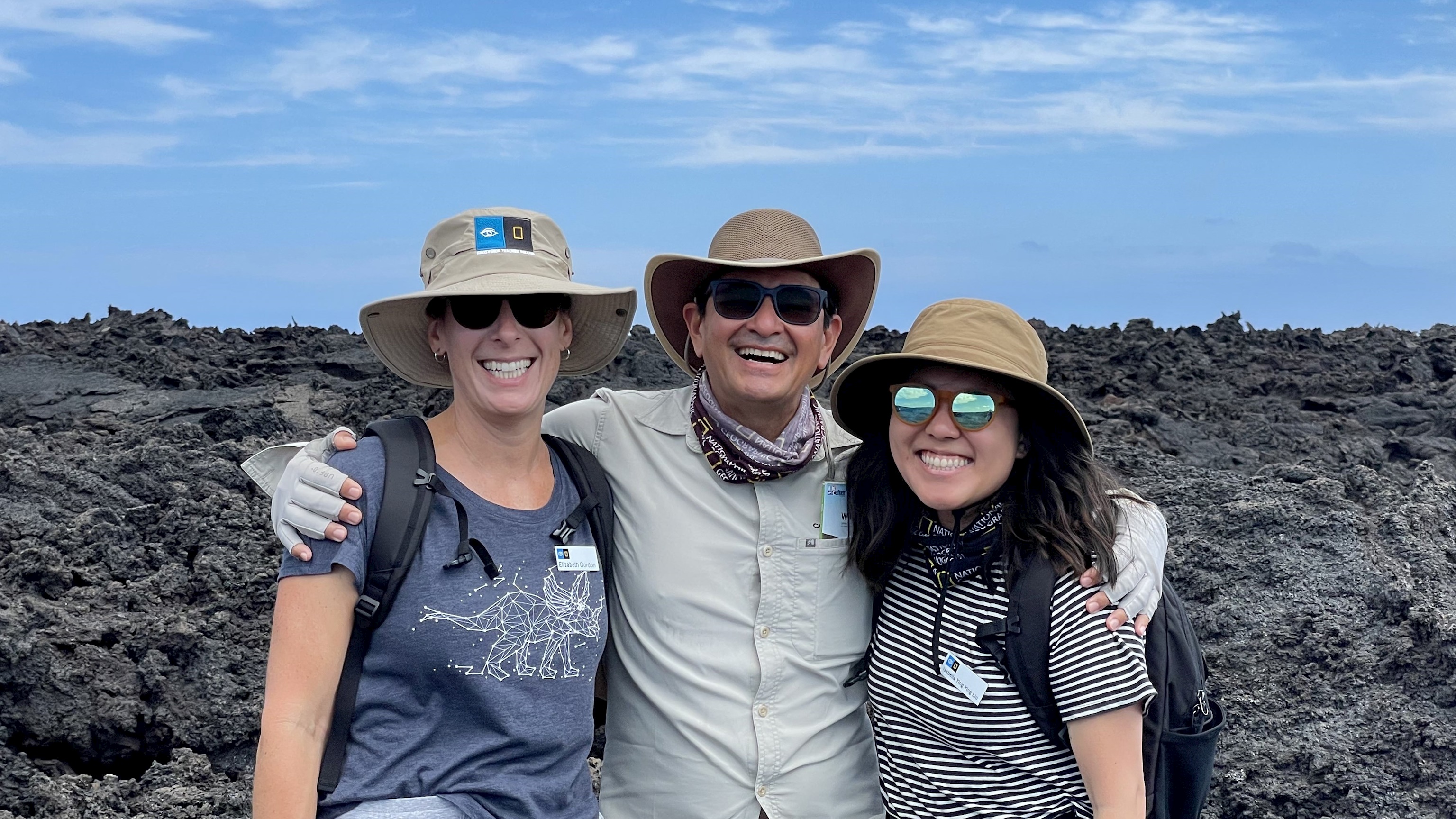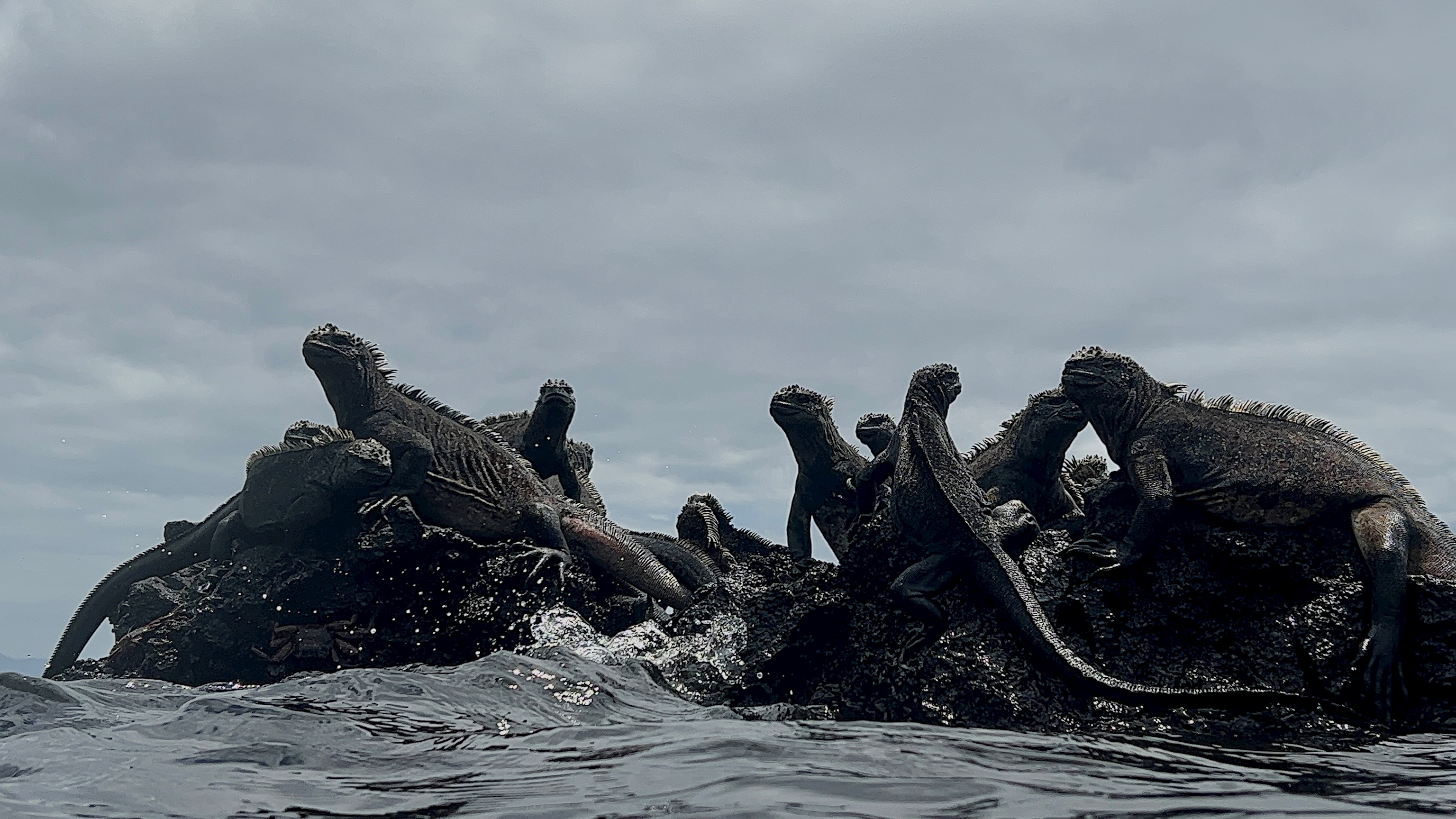371 Bloor Street West
Toronto, ON M5S 2R7 get directions
Toronto, ON M5S 2R7 get directions


Seeing becomes understanding. This summer, UTS Chemistry Teacher Isabella Liu crossed paths with a centurion of a giant tortoise on the island of Santa Cruz in the Galápagos, taking care to maintain the two-metre distance required by local regulations. Snorkelling off the National Geographic Endeavour II, she glimpsed the giant span of manta ray and sea turtles below in crystal clear waters. On land, she witnessed the suave mating dance of the blue-footed boobies. And she tested the water quality as a volunteer for the non-profit Water Rangers and found it was as pristine as ocean water can get in our world.
It was all part of what she calls a “life-changing” professional development experience as a 2023 Grosvenor Teacher Fellow with Lindblad Expeditions and National Geographic Society – based on the idea that the learning from these powerful firsthand encounters with the natural world has an exponential effect as teachers pass on the knowledge – and the awe – to their students and communities, all for the good of the environment.

Close encounters with a green sea turtle.
“Once you make eye contact with a sea turtle in the wild, it really puts things into perspective,” says Isabella, who is also the UTS Science Department coordinator. “Every single sea turtle that I saw was significantly older than me. I feel like they have so much wisdom to share on survival, especially when they are the favourite food of sharks and orcas. Their lives are so harsh. They have to lay 1,000 eggs and only one in 1,000 will make it in the wild.”

Visitors can only land on the Islands with an authorized local naturalist guide – here are Elizabeth Gordon (left), a teacher from the Academy for College and Career Exploration in Baltimore, and Isabella (right) with naturalist mentor, Celso Montalvo.
Isabella was one of 50 teachers selected to travel to various natural locations around the world, and only one of seven Canadians. For eight days, she lived on board the National Geographic Endeavour II, learning about the unique biodiversity and species found in land and sea of the Galápagos from Celso Montalvo, the official local naturalist mentor for the teachers.
.jpg)
When she tested the water for Water Rangers she was amazed to find it so pristine, but believes it is a sign that the human interventions put in place to protect the islands are working. “We weren’t allowed to bring any food or plastic water bottles off the boat,” she says. “The entire islands seem to take on the persona that single-use plastics are just pointless. We hear a lot about how that change is like an individual-based action, but it was interesting to see how it had become a culture there.”
A UNESCO World Heritage Site, the Galápagos Islands are named for the famed giant tortoises that call it home and renowned as the inspiration for Charles Darwin’s groundbreaking evolution theory of natural selection following his visit in 1835.
“The rules are quite stringent for a good reason,” says Isabella. “Every time we went on the islands which are a national park, we had to be accompanied by a naturalist. We couldn’t stray from the path, and they had to be able to see us. If we have touched the sand, we have to wash our feet to avoid cross-contaminating the islands, each of which have their own unique biodiversity.”
The 133,000-square kilometres surrounding the archipelago are a marine reserve with no commercial fishing, one of the largest and most biodiverse marine protected areas in the world.

Water iguanas
Some of the wildlife she encountered were completely unfazed by the presence of humans. The land iguanas with their magnificent girth were stoic in the sun, unblinking and unmoving as visitors approached. Sea lions came up and blew bubbles in Isabella’s face when she was snorkelling, so close she could see their “very bad teeth,” damaged from what the naturalist told them was flesh-eating bacteria, warning her to take care with any cuts. When visiting the islands, sometimes they landed on docks while other times the zodiacs would drop them in the water to wade to shore. She also had the opportunity to tour her namesake island, the seahorse-shaped Isabela Island, as well as the Charles Darwin Research Station.
Galápagos sea lion
Approximately 30,000 people live largely on four of the islands, and Isabella says they were very proud to be Ecuadorians from the Galápagos and also of the conservation efforts on the islands. On a visit to a ranch on Santa Cruz ‒ the island with the largest population of people ‒ she realized that what appeared to be boulders were in fact giant tortoises, with about 50 lying in the fields.
Grosvenor Teacher Fellows Elizabeth and Isabella exploring the abundance of marine wildlife around the Galápagos Islands.
Isabella, who also recently received a Prime Minister's Award for Teaching Excellence in STEM, says that she plans to emulate the way her naturalist guide Celso communicated about science, using storytelling techniques that incorporated his own experiences to bring the learning to life. For units on organic chemistry, when they are talking about how different polymers break down in the wild, she is considering having students do a plastics audit of our school with an eye to minimizing single-use plastics.
“There's a huge difference between reading about something and experiencing it,” she says. “As a science teacher who’s usually very theoretical and informed by research, it was amazing to get in touch with the emotional part of learning by immersing myself in these amazing experiences – being in the Galápagos with these ancient species was just so humbling.”
.jpg)
The ancient geology of Fernandina Island.
